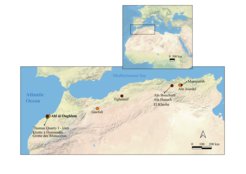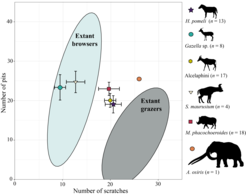New Insights Into 2.5-million-year-old Environments On The Casablanca Coast Of Morocco In North Africa
A novel study combines analysis of wear marks and biochemistry of fossil animal teeth at the site of Ahl al Oughlam (dating to 2.5 million years ago) to study past Moroccan ecosystems in deep time.

In recent years, North Africa has become an increasingly prominent region for studying human evolution with the discovery of sites showing the presence of hominins in the Early Pleistocene (2.4 Ma). These sites are primarily located in the eastern and western regions of Morocco, as well as in Algeria, where the oldest known archaeological site, dated to 2.4 million years ago, is found.

Ahl al Oughlam, is located near the city of Casablanca, just a few kilometers from the Atlantic coast, and dated to approximately 2.5 Ma. In this study, published in Quaternary Science Reviews, researchers, applied stable isotope analysis and tooth wear analysis to fossil animals discovered at this site.
This multi-method study demonstrated the presence of a relatively arid environment with a mix of C3 grassland and shrubland at the Plio-Pleistocene boundary ~2.5 million years ago at Ahl al Oughlam site, also suggest that hominins at the site of Tighenif (900 kilomteres away) would have likely had to cope with fairly arid environments.

In fact, the animal community diversity in this region seems to have been low, indicating a limited diversity of habitats and lack of freshwater opportunities (indicated by the absence of hippos, crocodiles, and freshwater birds).
More in-depth analysis of the fossil assemblages of this region may therefore provide insights into how early hominins present in North Africa overcame aridity 2.5 million years ago, and what this says about their adaptive capacities relative to contemporaneous hominins in other parts of Africa and relative to subsequent human populations later in the Pleistocene, including our species.


